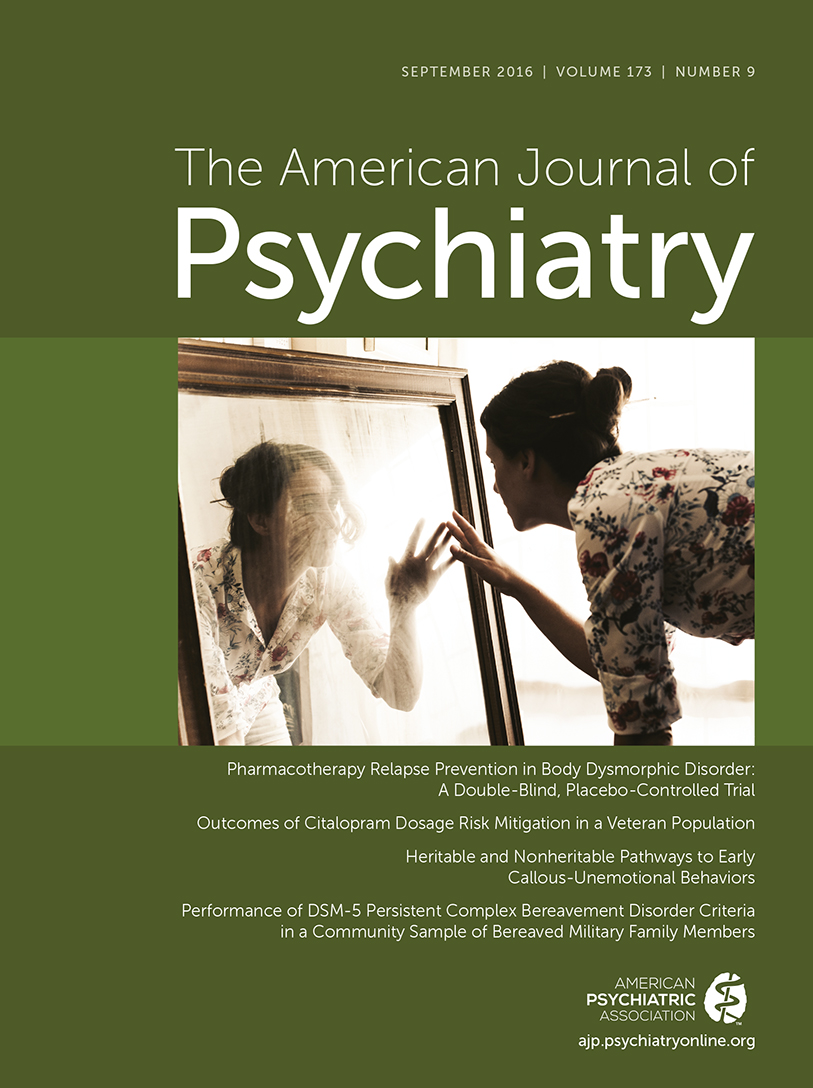Efficacy and Safety of Antidepressants Added to Antipsychotics for Schizophrenia: A Systematic Review and Meta-Analysis
Abstract
Objective:
The authors examined the safety and efficacy of antidepressants added to antipsychotic drugs in the treatment of schizophrenia.
Method:
Multiple databases and previous publications were searched through June 2015 to identify all randomized controlled trials of any add-on antidepressants compared with placebo or no-treatment in schizophrenia. Depressive and negative symptoms (primary outcomes), overall symptoms, positive symptoms, side effects, exacerbation of psychosis, and responder rates were examined. Subgroup, meta-regression, and sensitivity analyses were performed, as well as investigations of publication bias and risk of bias.
Results:
Eighty-two randomized controlled trials with a total of 3,608 participants were included. Add-on antidepressants appeared more efficacious than controls for depressive symptoms (standardized mean difference: –0.25, 95% CI=–0.38 to –0.12), negative symptoms (standardized mean difference: –0.30, 95% CI=–0.44 to –0.16), overall symptoms (standardized mean difference: –0.24, 95% CI=–0.39 to –0.09), positive symptoms (standardized mean difference: –0.17, 95% CI=–0.33 to –0.01), quality of life (standardized mean difference: –0.32, 95% CI=–0.57 to –0.06), and responder rate (risk ratio: 1.52, 95% CI=1.29 to 1.78; number-needed-to-treat-to-benefit: 5, 95% CI=4 to 7). The effects on depressive and negative symptoms appeared more pronounced when minimum thresholds of these symptoms were inclusion criteria (standardized mean difference: –0.34, 95% CI=–0.58 to –0.09 and standardized mean difference: –0.58, 95% CI=–0.94 to –0.21, respectively). There were no significant differences between antidepressants and controls in terms of exacerbation of psychosis, premature discontinuation, and the number of participants with at least one adverse event. More patients taking add-on antidepressants suffered from abdominal pain, constipation, dizziness, and dry mouth.
Conclusions:
Analysis of primary outcomes (depressive and negative symptoms) suggests small, beneficial effects of adjunctive antidepressants. It would appear that this augmentation can be accomplished with a low risk of exacerbation of psychosis and adverse effects. However, secondary and subgroup analyses should be interpreted cautiously and considered exploratory.
Access content
To read the fulltext, please use one of the options below to sign in or purchase access.- Personal login
- Institutional Login
- Sign in via OpenAthens
- Register for access
-
Please login/register if you wish to pair your device and check access availability.
Not a subscriber?
PsychiatryOnline subscription options offer access to the DSM-5 library, books, journals, CME, and patient resources. This all-in-one virtual library provides psychiatrists and mental health professionals with key resources for diagnosis, treatment, research, and professional development.
Need more help? PsychiatryOnline Customer Service may be reached by emailing [email protected] or by calling 800-368-5777 (in the U.S.) or 703-907-7322 (outside the U.S.).



